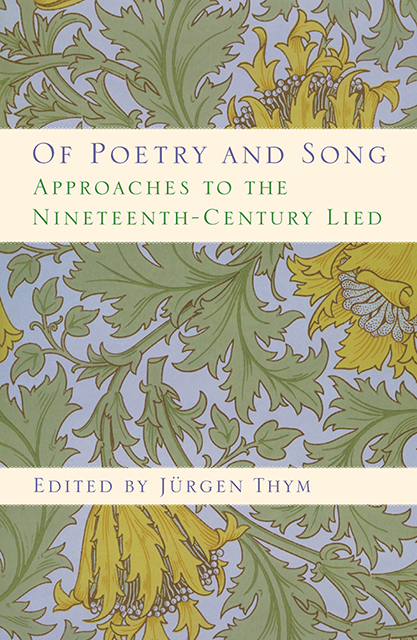Chapter Fifteen - Why Dichterliebe Twice? The Case of Schumann’s Opus 24 and Opus 48
Published online by Cambridge University Press: 02 March 2023
Summary
Zu fragmentarisch ist Welt und Leben!
(Too fragmentary is world and life!)
Heine, Die Heimkehr 63So begins a poem in Heine's Die Heimkehr, one of the constituent collections within his Buch der Lieder (1827). When one reads the whole poem from which this opening line is taken, one realizes that the poet is hardly raising this cry sympathetically but rather that he is making fun of those who believe the world and life could be experienced as anything other than fragmentary. He aims his satire at the academic, “der weiß das Leben zusammenzusetzen” and “macht ein verständlich System daraus” (who knows how to construe life as an understandable system). Why I have nevertheless chosen to use this verse as a motto for this academic essay will gradually become clear.
The premise of this chapter is that Schumann's two song cycles on poems of Heine—Liederkreis, op. 24, and Dichterliebe, op. 48—are very similar in their general tenor; that both begin with unhappy love, continue with disillusionment, sadness, and anger, and then end in withdrawal and consolation. One sometimes even hears Liederkreis, op. 24, referred to as “die kleine Dichterliebe.” I have wondered what led Schumann to compose two such similar song cycles on works of the same poet within three months of each other (February and May 1840). This is clearly not a question one can answer with source studies or musical analysis or for which one expects to find a certain or precise explanation. It is more an occasion for reflection.
Stated with more chronological accuracy, the question should actually be: why did Schumann compose the Heine Liederkreis two times, since it was composed first and then was followed by Dichterliebe? My reply is that Schumann did not compose the same song cycle twice. In spite of the common themes and moods of these two cycles, they are really two quite different compositions. This may sound as though I have set up a convenient “straw man” to demolish, but the answer I propose is less important in itself than the reasons behind it.
- Type
- Chapter
- Information
- Of Poetry and SongApproaches to the Nineteenth-Century Lied, pp. 390 - 406Publisher: Boydell & BrewerPrint publication year: 2010



